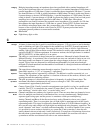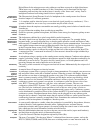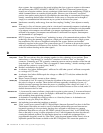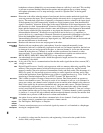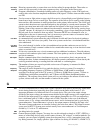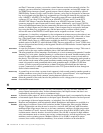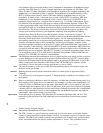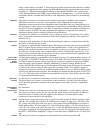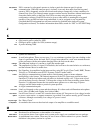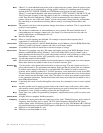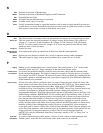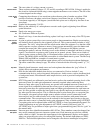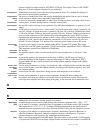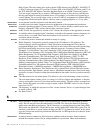140 Handbook of Intercom Systems Engineering
either a small earpiece or headset ** that carries the program sound unless the director or another
member of the production team operates the IFB and interrupts the program sound with special
instructions. * IFB means Interrupted Feedback, or Interrupted Fold-Back. This system is also
called Interrupted Return Feed (IRF), program Interrupt, or prompt-mute. ** In sports, stadium,
and parade remotes, a double muff headset is used. Impedance is the resistance to an alternating
current.
Impedance
Impedance is composed of resistance and reactance (rectangular coordinate representation).
Impedance can also be viewed as a vector quantity with a magnitude and a phase angle.
Impedance can be measured with an impedance meter. Impedance may vary with frequency. In
the discussions in other sections, the impedance is usually that at one kilohertz, unless otherwise
specified. The unit of impedance is the ohm. An impedance stated in rectangular coordinates is a
complex number. In RTS™ Systems equipment the impedance is important over a band of
frequencies and this band is normally stated in the specifications.
Inductance
A property of a conductor or circuit that resists a change in current. Transformers, coils, chokes,
wires, and printed circuits have inductance. Inductance is measured in henries. The symbol for
inductance is L.
Insertion Loss
A measure of the attenuation of a device by determining the output of a system before and after
the device is inserted into the system.
Intercom
1. A means of organizational communications. The design of the intercoms systems produced by
RTS™ Systems focuses on the concept of team communications. A team is an organization of
members who perform individual tasks to accomplish a team goal or objective. The intercom is
the pathway or means for the voice communications used to coordinate the team activity. 2. In
larger systems, intercom refers to the matrix or point-to- point communications equipment, and
interphone refers to the conference type equipment.
Intercom Data
Groups and Port
Number
Calculation
For data routing purposes, port numbers are arranged in groups of 8 sequential intercom ports. In
an ADAM™ or ADAM™ CS Intercom System, each Audio I/O card comprises one data group.
In a Zeus™ Intercom System, each group of 8 port connectors comprises a data group. Within
each data group, each keypanel is uniquely identified by its address setting. Whenever you
display the Panel ID, the intercom system determines which data group the keypanel is connected
to, and also the address setting. It then reports the calculated address. For example: suppose a
keypanel is connected to data group 3 and the keypanel address is set to 5. Since each data group
consists of 8 sequential intercom ports, the calculated port number for this keypanel will be (2*8)
+ 5, or 21. This is the total of all intercom port numbers on the first 2 data groups, plus the offset
of 5 ports into the third data group.
Interconnect
A cable, device, or method of connecting one device to another, or one system to another.
Interface
The place where two systems or a system and a subsystem meet. Also the device that adjusts
levels and other parameters such that one system appears to the other system as a compatible
extension.
Intermodulation
Distortion
See Distortion.
Inverse Square
Law
The decrease in level as a listener moves away from a loudspeaker, or a microphone is moved
away from an acoustic source. The law says that the sound pressure will decrease six dB every
time the distance is doubled. This law applies to the outdoors, and to the indoors where
reverberation and room effects are negligible.
IR Drop
Applies to the voltage drop along a wire as a function of the current (I) and the resistance of the
wire (R). For example, the resistance of 10,000 feet of a number 22 gage pair is 320 ohms. The
DC voltage drop at the end of the wire due to a user station using 50 milliamperes of current is
0.040 amperes times 320 ohms equals 12.8 volts. If the power supply is 32 volts and the drop is
12.8 volts, the voltage at the end of the wire is 19.2 volts. The minimum operating voltage for a
user station operating in the high impedance mode is 18 volts. So a belt pack user station such as
the BP317, or BP300 has enough DC voltage to work at the end of 10,000 feet of a 22 AWG wire
pair.
Isolation
The ability of a circuit or component to reject interference, usually expressed in dB.



